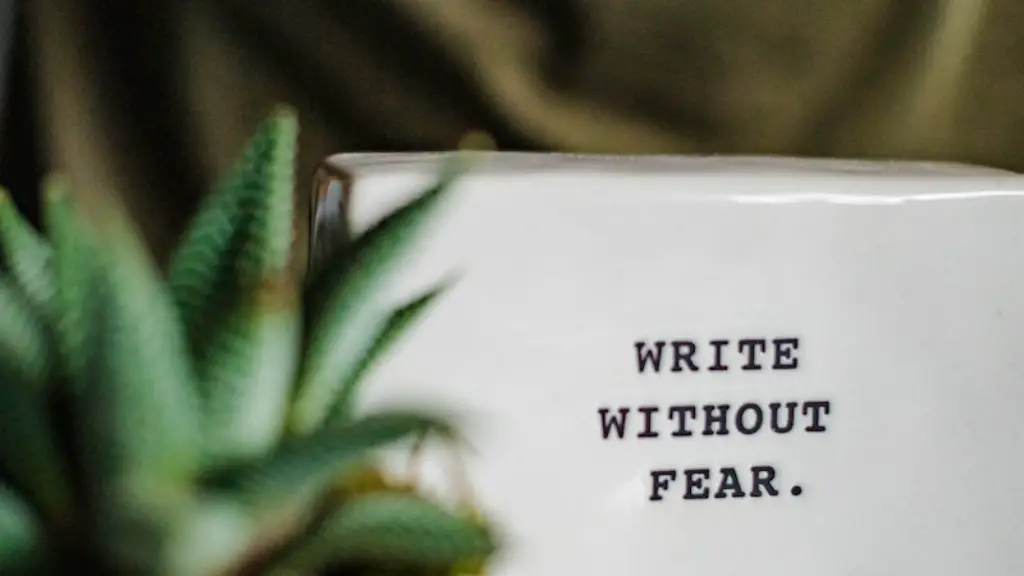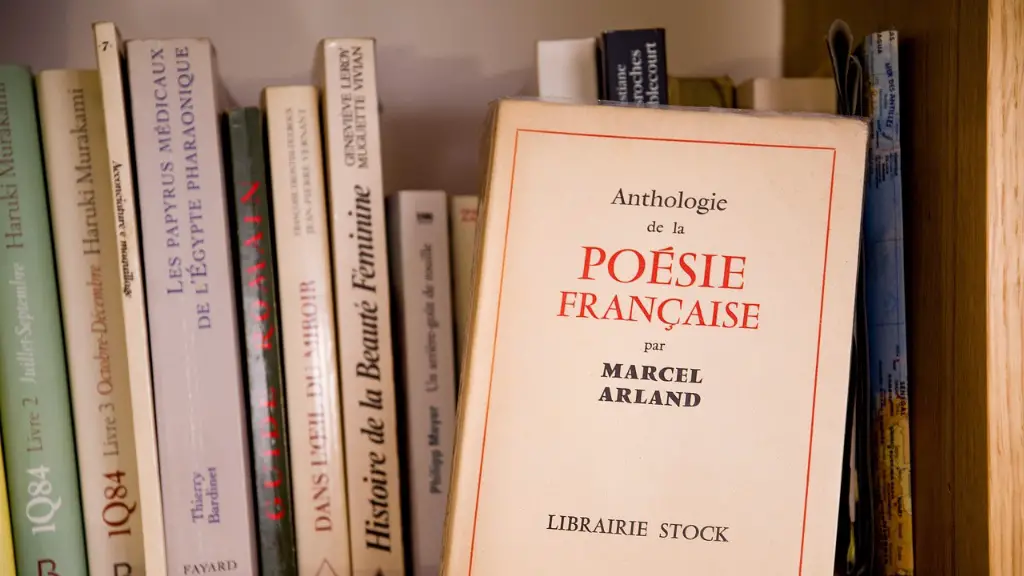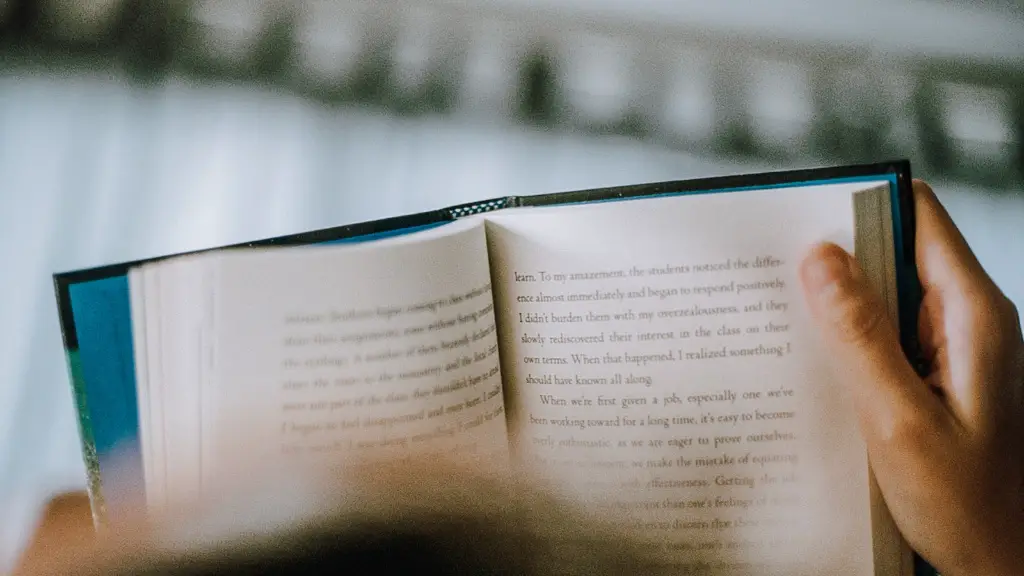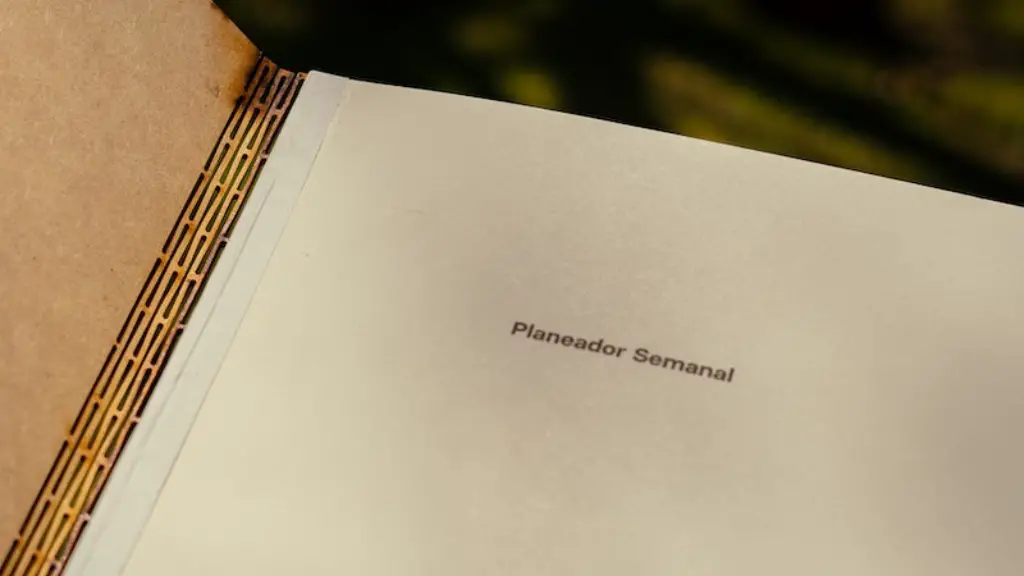Poetry is a form of written expression that has been used for centuries to both entertain and convey important messages. It is a way to express emotion, communicate experience and communicate ideas. Poetry can be divided into various forms, including epic poetry, lyric poetry, dramatic poetry, and narrative poetry. Each form has its own rules for writing and structure. However, there are some essential elements of poetry which are common regardless of the form.
One of the most popular and important elements of poetry is the use of imagery. Using vivid language to create mental images allows poets to create a direct connection with the reader and bring powerful messages to life. In addition to depicting a scene, imagery can also be used to represent abstract concepts and emotions. That is why it is used so often in love poems, since words alone cannot fully capture the complexities of romantic love. Poets often use figurative language such as similes and metaphors to create engaging and powerful imagery.
Another important element of poetry is rhythm and rhyme. Combining words in rhyming patterns allows poets to create a catchy sound that helps make a poem memorable. Additionally, rhythm helps give a poem a sense of flow that can draw the reader in and help create a mood or atmosphere. While some poems do use traditional rhyme schemes and meter, modern poetry often forgoes these traditional forms, opting instead for alternative patterns for expressing rhythm. These can include assonance, alliteration and repetition.
Lastly, poet often make use of literary devices such as alliteration, which is the repetition of the same letter or sound at the beginning of nearby words. This technique helps to create a poetic sound and add emphasis to certain words or ideas. Other common literary devices such as metaphors, similes and symbols can also help to create vivid imagery and powerful messages within poems.
Given the wide variety of forms, there are no absolute rules as to what elements are essential in poetry. However, a few elements such as imagery, rhythm and rhyme, and the use of literary devices are common in all types of poetry and are essential to creating a strong poem.
More elements of poetry
One of the most important elements of poetry is its use of language. Good poets use language to bring the poem to life and make it memorable to the reader. To do this, poets use vivid and descriptive language to create imagery and convey a message. Furthermore, by using various literary devices and techniques such as metaphor, synecdoche and personification, poets emphasize certain words or ideas and create powerful emotions for the reader.
The form of a poem is also an important element. This includes everything from the spacing of the lines and the stanza structure, to the rhyme scheme and the length of the poem. Different forms will have their own rules and structure and can help create a certain atmosphere or mood for the poem. The form of the poem should be consistent throughout and should be used to create a clear message.
The use of symbolism is also a common element in poetry. Symbols are images or objects that are used to represent something else, usually an abstract concept. Symbols can be used to add meaning to a poem and help convey a message in a powerful way. Poets can also use symbols to stir powerful emotions in the reader, such as nostalgia, love, or sorrow.
Rhythm is also an integral part of poetry. By creating flow in a poem and giving it a certain beat or rhythm, poets can draw listeners in and keep them engaged. Standard metrical and rhyming patterns can be used for this purpose, but modern poets often forgo these traditional structures in favor of more modern, alternative forms. These forms can include alliteration, onomatopoeia, and repetition.
Style of writing
The style of writing used in poetry is also an important element. Poets often use specific word choice, imagery, metaphors and other literary devices to convey meaning and create powerful emotions in the reader. Furthermore, the choice of language and syntax can help convey the tone and atmosphere of a poem, often without ever saying it outright.
Poets can also use structure to create specific effects. Line length and spacing can both be used to emphasize certain parts of the poem or convey a certain mood. For example, shorter lines and shorter phrases can create an intense and powerful atmosphere, whereas longer lines and longer phrases can create a more peaceful and tranquil atmosphere.
The use of sound in poetry is another important element. By combining words in certain patterns, poets can create rhythm, create imagery, and even mimic certain actions, such as birdsong. Poets also use techniques such as rhythm, alliteration and assonance to create a memorable and interesting sound to the poem.
Finally, poets often make use of poetic devices such as end rhyme, internal rhyme and consonance to create engaging and powerful sounds. These techniques give the poem a more musical quality and make it more enjoyable to listen to.
Voice of the poem
The voice of the poem is also a key element. This is the attitude of the poem and the speaker, and it can often set the tone of the poem. It can be playful and lighthearted, or somber and serious. The voice of the poem can also be used to explore certain topics and emotions, such as sorrow or joy. Furthermore, the choice of language used to convey the poet’s voice is also important.
The narrative or plot of the poem is yet another essential element. This can be a simple story or a more complex plot depending on the poet’s aims. The narrative can be used to explore certain topics or emotions, or simply to entertain the reader. The plot of the poem should move forward in an engaging and meaningful way, while still maintaining a sense of cohesion and flow.
In conclusion, there are many essential elements of poetry that are common regardless of the form. These include the use of imagery to create vivid mental images, rhythm and rhyme to create flow, and literary devices such as metaphors, symbols and alliteration to create emphasis and emotion. Additionally, the choice of language, structure, and narrative of a poem all help create a strong poem.
Influence of elements
The influence of the various elements of poetry can help to create an effect on the reader. For example, the use of imagery can create vivid mental pictures and evoke powerful emotions. Furthermore, by using symbolism, poets can help convey hidden meanings and powerful messages. In addition, the use of rhythm, rhyme and sound can also help to create an effect on the reader by helping to create a certain atmosphere or mood, as well as draw the reader in and keep them engaged.
The form of the poem is also important, as it can affect the overall effect of the poem. A poem with an unusual structure or unconventional rhyme scheme can create a strong impact, while a more regular form can help to create a sense of order and cohesion. Similarly, the narrative of a poem can also be used to create a certain effect on the reader, by exploring certain emotions or ideas in a subtle, meaningful way.
The choice of language within a poem can also have a powerful influence. Poets often use different word choice and phrasing to emphasize certain words and ideas, and to add emotion to the poem. Furthermore, the use of alliteration, assonance and other specific techniques can also be used to great effect, creating powerful sound and imagery.
Poets can also use their tone or voice to create an effect. By using a certain language or phrasing to convey the poet’s attitude, the reader can better understand the poem’s message. Additionally, the narrator’s point of view can influence the reader and shape their understanding of the poem.
Role of the poet
The role of the poet is to combine all of these elements to create a poem that conveys a powerful message and creates an effect on the reader. The poet is the one who chooses which elements are used, how they are used, and how they are combined. The poet is also responsible for crafting the narrative and exploring the emotions of the poem. Furthermore, the poet is the one who must create a piece that is true to their own voice and experience.
In this way, the elements of poetry work together in order to create a work of art that is powerful, meaningful, and memorable. By using imagery, rhythm, rhyme and other elements, a poet can craft a poem that will resonate with the reader and bring their message to life. Furthermore, by combining these elements in a meaningful way, a poet can create a poem that is rich in meaning and will linger in the memory of the reader.
Power of poetry
The power of poetry lies in its ability to communicate powerful messages and evoke strong emotions in the reader. By making use of the various elements of poetry, a poet can capture an emotion, an experience, an idea, and make it vivid and real to the reader. In this way, the poet has the ability to connect with the reader, to engage them in powerful moments, and to touch their hearts. That is why poetry has been a form of expression for centuries, and why it will continue to be a powerful form of communication for generations to come.





